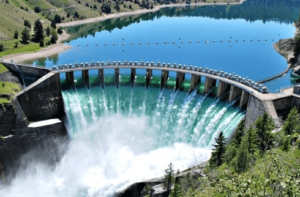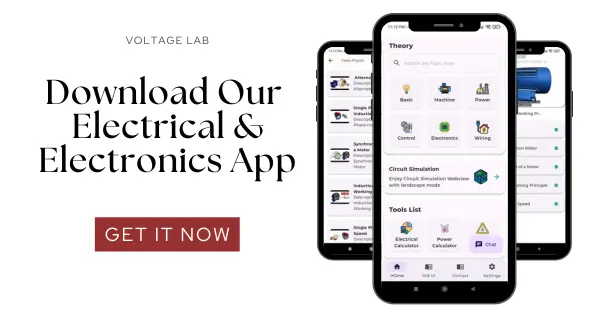Primary sources of electrical energy are the backbone of modern civilization, powering industries, homes, and essential services. These sources, ranging from conventional methods such as fossil fuels and hydropower to renewable options like solar and wind energy, play a crucial role in meeting the growing global demand for electricity.
Each source contributes to the energy infrastructure in unique ways, shaping how we generate and consume electricity. In this article, we will explore the major sources of electrical energy, their characteristics, and their key applications in today’s world.
We know that electrical energy can be generated by converting various forms of natural energy. This article will discuss the primary sources of electrical energy.
Primary Sources of Electrical Energy:
- Sun
- Wind
- Water
- Fossil Fuels
- Nuclear Energy
Among the five electrical energy sources mentioned above, the first two sources are not widely used. They have certain limitations which restrict their widespread use. In the present time, Hydroelectric Power Plants, Steam Power Plants, and Nuclear Power Plants are being widely used.
Solar or Solar Power Plant
Among the basic energy sources, solar energy is one that provides both heat and light. We can generally use this heat and light to generate electricity.

Using Heat:
Using a concave mirror, sunlight is focused on a specific area. The heat from this sunlight is used to increase the temperature of water in the boiler. Steam is generated inside the boiler, which helps rotate the turbine. The turbine drives the alternator, which generates electricity.
This method has several limitations:
- A large area is required to generate a small amount of electrical energy.
- It cannot be used on cloudy days or at night.
- The temperature of sunlight is not constant and varies during the day, affecting the temperature.
- This method is not economical, making it an unprofitable project.
Despite this, such plants exist in various parts of the world where there is strong heat radiation. In places where there is a shortage of fossil fuels, this type of energy is used.
Using Light:
Electricity can be generated using photovoltaic cells by directly harnessing sunlight. The sunlight directly falls on the surface of the photovoltaic cells. These cells are typically semiconductor p-n junction cells. Due to sunlight, a potential difference or voltage is created at the cell’s junction.
This potential difference or voltage generates electricity in a solar power system connected to the circuit. The solar system is currently very popular in Bangladesh.
Wind
Electricity can be generated by harnessing wind energy. Such power plants are constructed in areas with sufficient wind. A windmill usually powers a small generator. The wind powers the windmill, which drives the generator.

We know that the speed or strength of wind is not constant. Therefore, the load is not directly connected to such plants. The generated electricity is stored in batteries, and an inverter converts the DC voltage from the batteries to AC voltage, which is then sent to the load.
Points:
- Since no fuel is used, the running cost is very low.
- Since wind flow is not constant, the output of this type of power plant varies at different times.
- The power generation capacity is very low.
Water
When water is stored in an appropriate place, i.e., from a higher to a lower position, potential energy is generated at the lower level. The equipment used to hold this water is called a dam. A dam is essentially a barrier that controls the flow of water.

When the dam is opened, potential energy is generated. This energy is used to rotate the water turbine. The water turbine drives the alternator, generating electricity. This method is popular worldwide.
Fossil Fuels
So far, fossil fuels are considered the primary source of electrical energy. We can generally use three types of fossil fuels:
- Solid Fuel – Coal
- Liquid Fuel – Diesel
- Gaseous Fuel – Natural Gas
Regardless of the type of fuel, the basic working principle is the same. By burning fuel in the boiler, heat and steam are generated. This steam is converted into mechanical energy through a suitable prime mover. The prime mover drives the alternator, converting mechanical energy into electrical energy.
Nuclear Energy
A nuclear power plant is a type of thermal power plant where the heat source is a nuclear reactor. Nuclear reactions generate heat, and this heat is used to produce steam. The steam drives the steam turbine, which is connected to a generator, producing electricity.

Burning 1 kilogram of nuclear fuel produces as much heat as burning 4500 tons of coal. In other words, 1 kilogram of uranium = 4500 tons of coal.
This heat is used to produce steam with the help of appropriate equipment. This steam typically runs the steam turbine. The steam turbine drives the alternator, generating electricity.
However, using nuclear power plants comes with several complexities:
- The construction, maintenance, and running costs of nuclear plants are much higher than other thermal power plants.
- These plants generate a significant amount of waste.
1. What are the sources of electrical energy?
Electrical energy is generated from various sources, including fossil fuels (coal, natural gas, and oil), nuclear power, and renewable energy sources like solar, wind, hydropower, and geothermal energy.
2. What is electrical energy?
Electrical energy is the power derived from the movement of electric charges, usually through a conductor, which can be harnessed to perform work, such as lighting, heating, and powering devices.
3. What is an example of electrical energy?
An example of electrical energy is the electricity used to power household appliances like refrigerators, televisions, and computers, or large-scale applications like industrial machinery and electric trains.
4. Where is electrical energy found?
Electrical energy is generated in power plants, both traditional and renewable, and then transmitted through power lines to homes, businesses, and industries. It can also be stored in batteries for later use.
5. What are the two types of electrical energy?
The two main types of electrical energy are static electricity (caused by stationary electric charges) and current electricity (generated by the flow of electric charges through a conductor).



